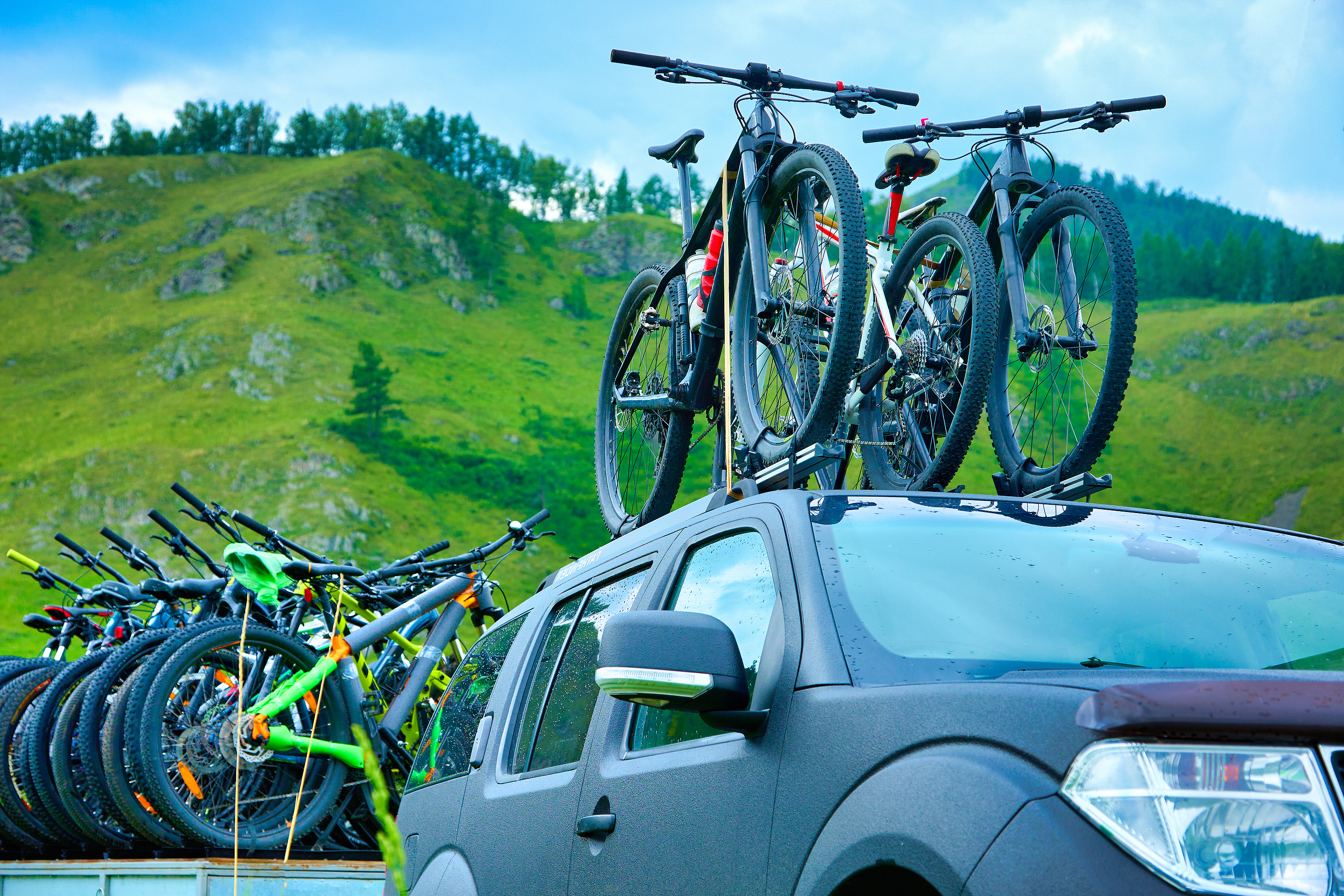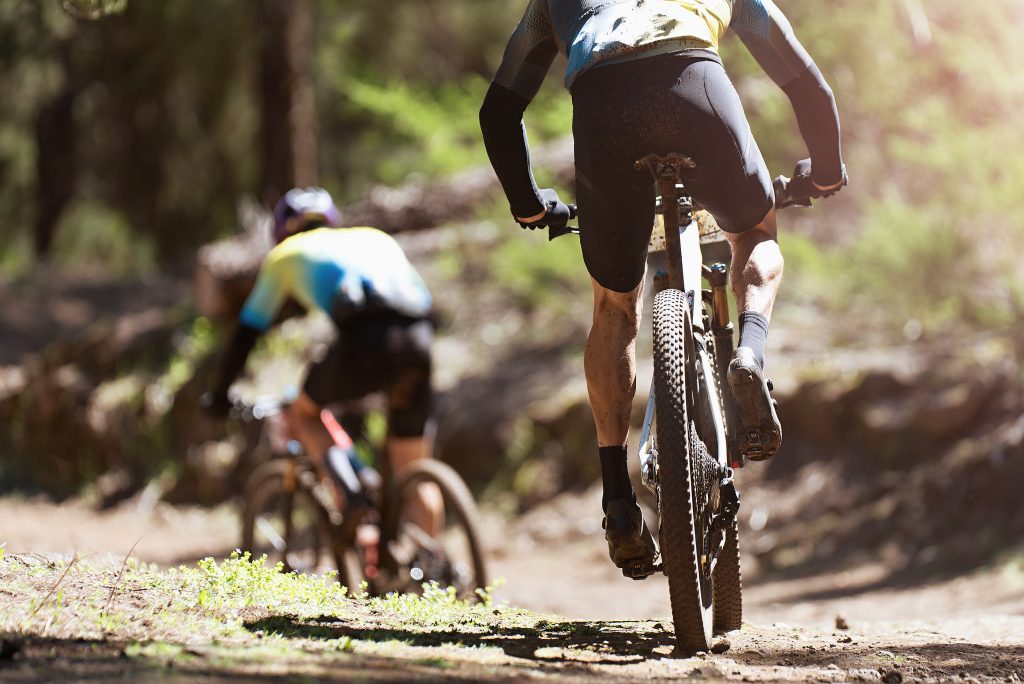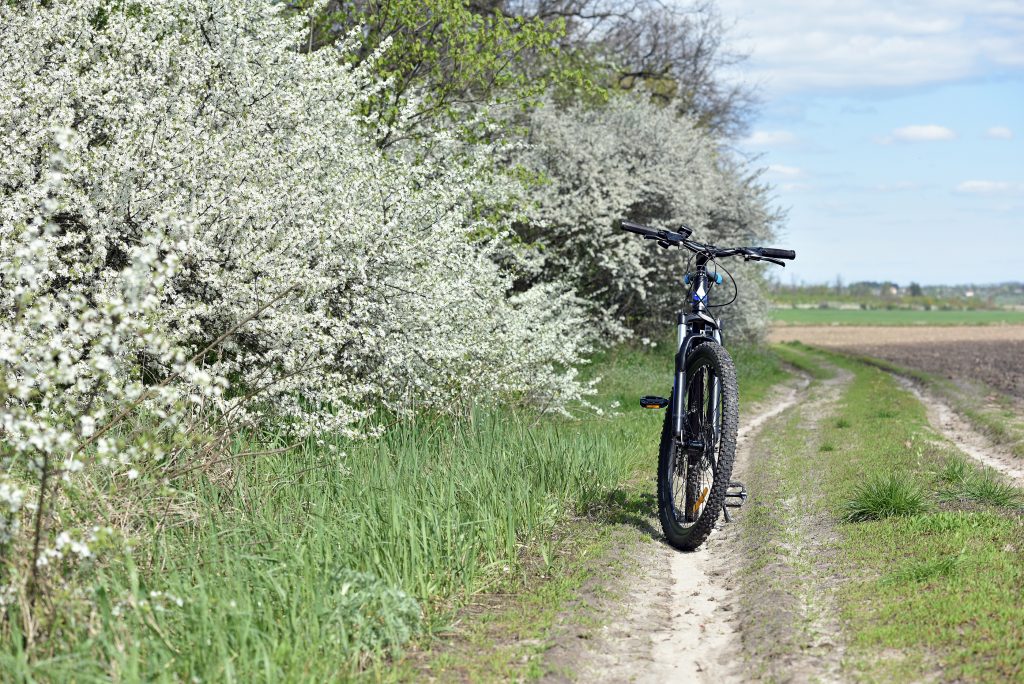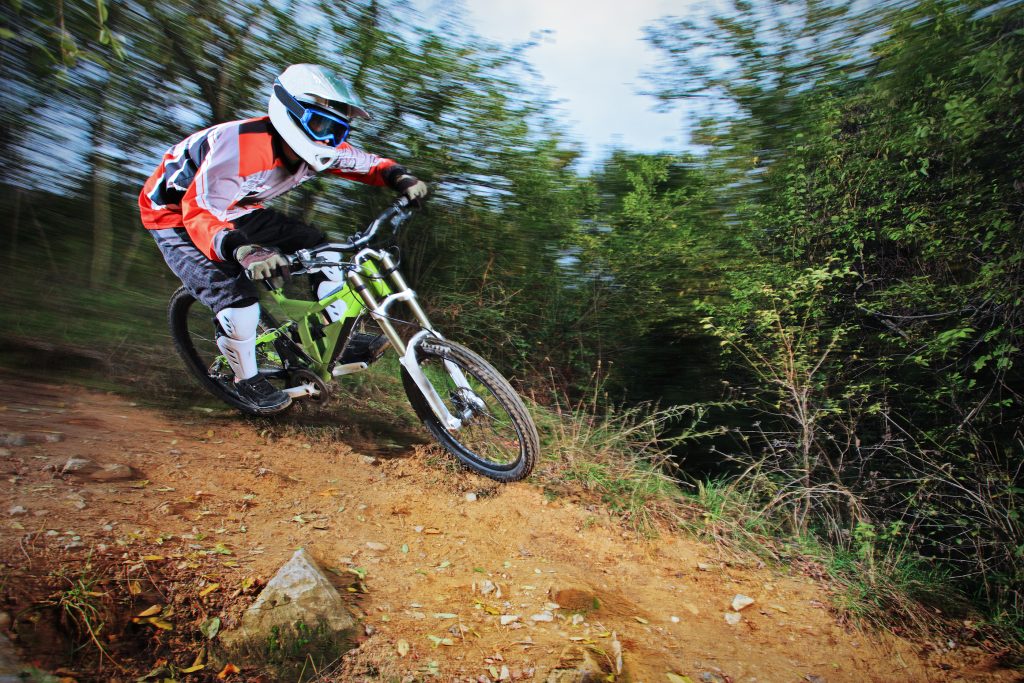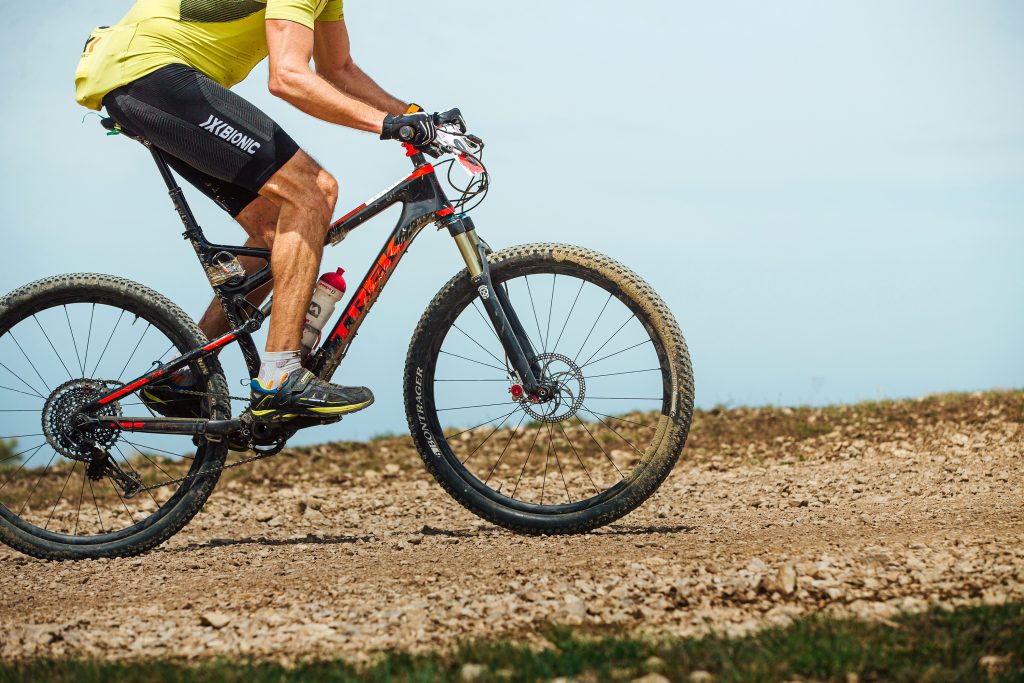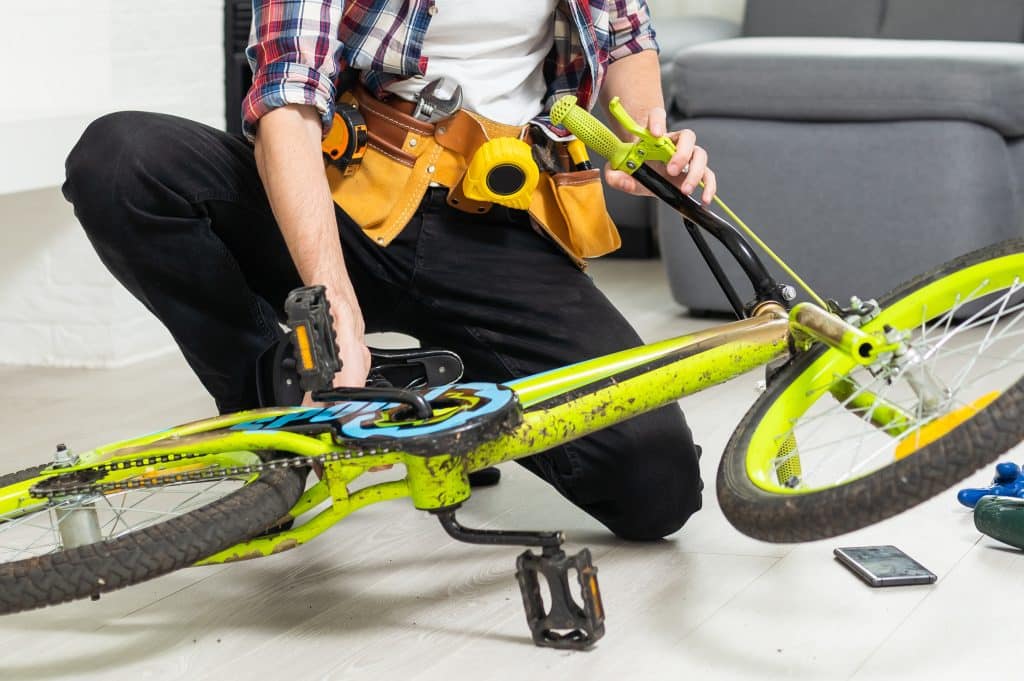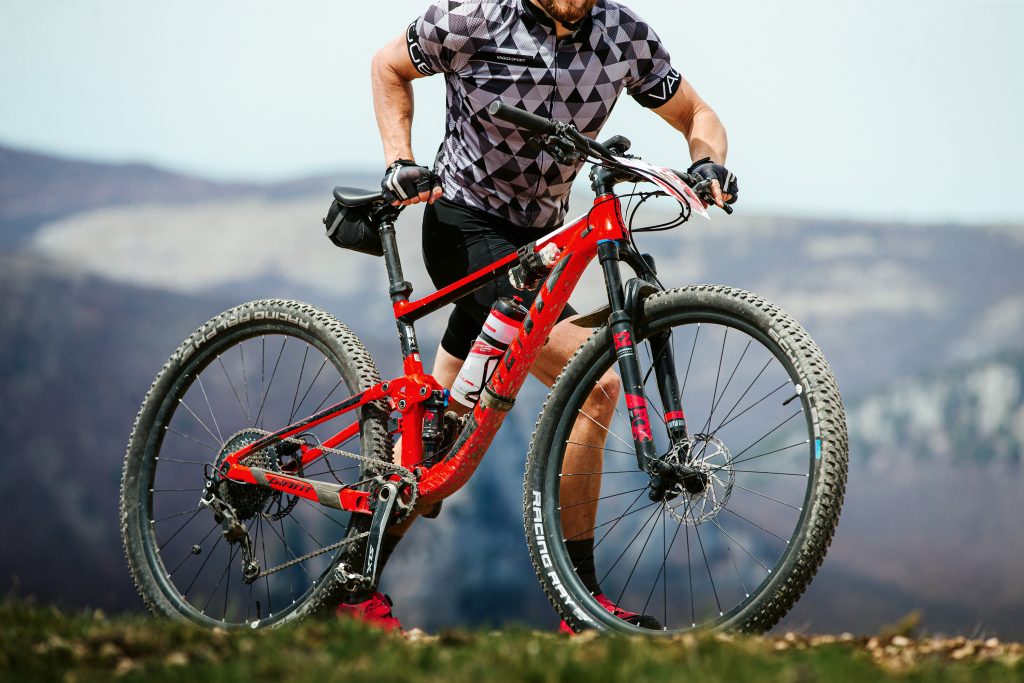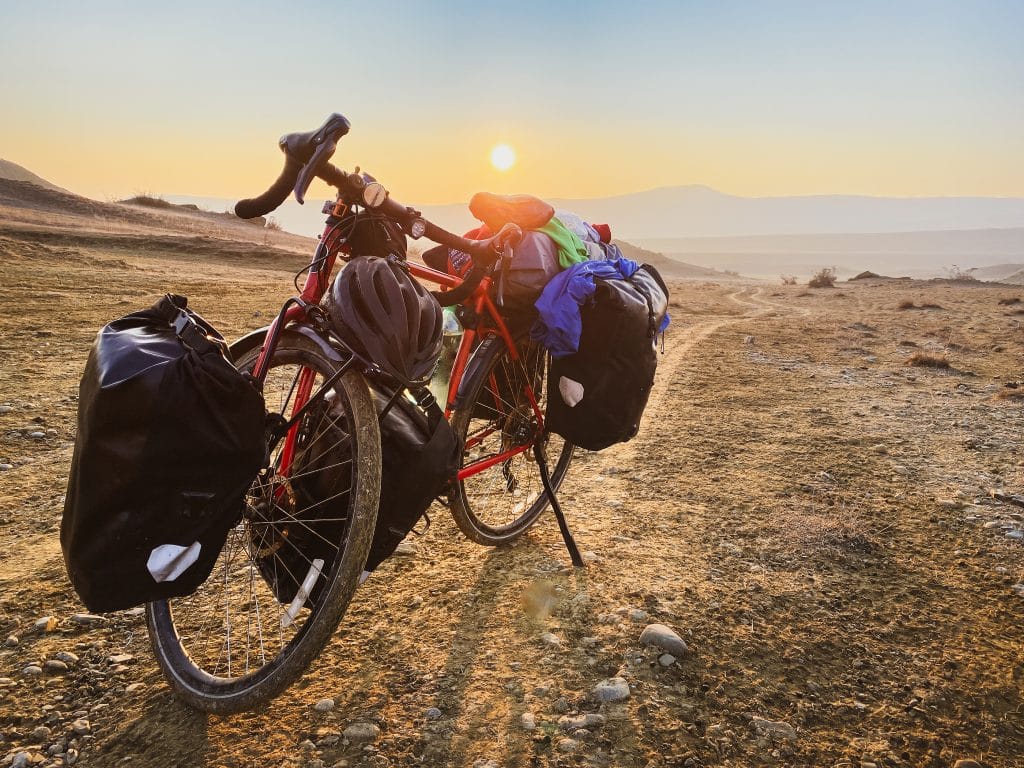Introduction
Cycling is more than just a mode of transportation; it’s a lifestyle, a form of exercise, a means of exploring new places, and a way to connect with the great outdoors. Whether you’re a seasoned cyclist or a beginner looking to embrace the world of biking, choosing the right bike is a critical decision. The perfect bike can significantly enhance your riding experience, and this comprehensive buyer’s guide is here to help you make that choice.
In the following sections, we will explore every aspect of buying a bike, from understanding your riding purpose and selecting the right type of bike to setting a budget, considering bike fit, evaluating components, and much more. We’ll delve into the various types of bikes available, the materials they’re made from, the features that impact your ride, and the importance of safety and maintenance.
By the end of this guide, you’ll be well-prepared to make an informed decision, ensuring that the bike you choose meets your needs and becomes your trusted companion on the road, trail, or wherever your cycling adventures take you. So, let’s start your journey to finding the perfect bike.
Determine Your Riding Purpose
The first and most crucial step in buying a bike is understanding why you want one. Your riding purpose will greatly influence the type of bike you should choose. Bikes are versatile, and there’s a specific type for nearly every kind of riding. Here are some common riding purposes to consider:
1. Commuting:
- If your primary goal is to commute to work, school, or other daily destinations, a reliable and comfortable commuter or urban bike may be your best choice. These bikes are designed for efficiency and ease of use on city streets.
2. Road Cycling:
- A road bike is the go-to option for those interested in long-distance rides on smooth roads and who want to improve their fitness. Road bikes are lightweight and built for speed.
3. Mountain Biking:
- A mountain bike is the way to go if you crave off-road adventures and tackling rugged terrain. These bikes are sturdy and equipped with suspension systems to handle challenging trails.
4. Hybrid Riding:
- Hybrid bikes are versatile and can handle a variety of terrains. They’re excellent for riders who want a bike that can transition from city streets to light off-road paths.
5. Touring:
- Touring bikes are built for long-distance journeys with panniers and cargo. If you dream of cycling across the country or embarking on extended bike tours, this is the type for you.
6. Racing:
- Racing bikes are designed for competitive road cycling. They are lightweight and optimized for speed, making them ideal for those interested in racing events.
7. Recreational Riding:
- If your primary goal is leisurely rides in the park, along scenic paths, or through your neighborhood, a cruiser or comfort bike offers a relaxed and enjoyable riding experience.
8. Fitness and Exercise:
- Some riders use their bikes as a way to stay fit and active. Fitness or exercise bikes are designed for this purpose, often with an upright riding position and features to track your progress.
9. Cargo Hauling:
- Cargo bikes are designed to carry loads, whether it’s groceries, children, or other heavy items. If you plan to use your bike for transportation, consider a cargo bike or one equipped with panniers and racks.
10. Specialized Riding:
- There are specialized bikes for activities like cyclocross, triathlons, and BMX. Choose a bike that matches your specific interests and needs.
By identifying your riding purpose, you can narrow your options and choose a bike that suits your lifestyle and goals perfectly. Remember that no one-size-fits-all solution exists, and owning multiple bikes for different purposes is perfectly fine if your budget and storage space allows.
Choose the Right Type of Bike
Once you’ve determined your riding purpose, it’s time to select the right type of bike that aligns with your goals and the terrain you plan to ride on. Here are some of the most common types of bikes, each tailored to specific riding styles:
1. Road Bikes:
- Best for: Road cycling, racing, and long-distance rides on smooth pavement.
- Features: Lightweight frame, narrow tires, drop handlebars, multiple gears for speed.
- Considerations: Ideal for those who want to cover a lot of ground on paved roads, perfect for fitness enthusiasts and road racers.
2. Mountain Bikes:
- Best for: Off-road trails, rugged terrain, mountain biking.
- Features: Robust frame, wide knobby tires, front or full suspension, flat handlebars.
- Considerations: Designed for rough trails and challenging conditions, suitable for adventurous riders.
3. Hybrid Bikes:
- Best for: Versatile riding, commuting, light trails, city streets.
- Features: Balanced mix of road and mountain bike features, upright riding position.
- Considerations: A great all-around option for riders who need a bike that can handle various terrains and uses.
4. City and Commuter Bikes:
- Best for: Daily commuting, urban riding, short-distance trips.
- Features: Comfortable and upright riding position, fenders, racks, and lights.
- Considerations: Designed for comfort and practicality on city streets, excellent for commuting and running errands.
5. Touring Bikes:
- Best for: Long-distance touring, bikepacking, carrying heavy loads.
- Features: Strong frame, multiple mounting points for panniers and racks, comfortable geometry.
- Considerations: Built for extended journeys with the ability to carry gear, perfect for touring enthusiasts.
6. Cruiser Bikes:
- Best for: Leisurely rides, boardwalks, flat terrain.
- Features: Upright riding position, single-speed or three-speed options, classic design.
- Considerations: Great for relaxed rides along the beach or through your neighborhood, but unsuitable for long distances.
7. BMX Bikes:
- Best for: Freestyle tricks, skate park riding, racing.
- Features: Compact frame, sturdy construction, knobby tires, minimalistic design.
- Considerations: Designed for jumps, tricks, and racing, perfect for BMX enthusiasts.
8. Electric Bikes (E-Bikes):
- Best for: Assisted cycling, reducing effort, commuting, all riding styles.
- Features: Battery-powered motor, pedal-assist, different riding modes.
- Considerations: It provides an extra boost, ideal for riders who want assistance on long commutes or hilly terrain.
9. Folding Bikes:
- Best for: Portability, urban commuting, limited storage space.
- Features: Compact design, easy folding mechanism, lightweight.
- Considerations: Convenient for urban commuters who need a bike that can be folded and stowed in tight spaces.
10. Gravel Bikes:
- Best for: Mixed terrain, gravel roads, bikepacking, adventure cycling.
- Features: Versatile tires, comfortable geometry, stable handling.
- Considerations: Suited for riders who enjoy exploring various terrains and prefer an all-road bike.
11. Cyclocross Bikes:
- Best for Cyclocross racing, off-road courses, and mixed terrain.
- Features: Lightweight frame, knobby tires, drop handlebars.
- Considerations: Ideal for cyclocross racers and riders who enjoy off-road challenges.
12. Triathlon and Time Trial (TT) Bikes:
- Best for Triathlon racing, time trials, and aero efficiency.
- Features: Aerodynamic design, aero bars, streamlined frame.
- Considerations: Specifically built for triathlons and time trials, maximizing speed and efficiency.
Selecting the right type of bike is crucial to ensure that your riding experience matches your goals and preferences. Take your time to explore the options, test ride different types, and consult with experts to find the bike that best suits your needs.
Set a Budget
Setting a budget is a critical step in the bike-buying process. Bikes come in a wide range of prices, so determining your budget upfront will help you narrow your options and make a more focused decision. Here’s how to approach budgeting for your new bike:
1. Consider All Costs:
- Your budget should encompass not only the cost of the bike but also essential accessories and safety gear. These may include a helmet, lock, lights, gloves, and a maintenance kit. Factor in these additional expenses when setting your budget.
2. Determine a Realistic Range:
- Be realistic about how much you’re willing to spend. Bikes can range from a few hundred dollars to several thousand, so consider your financial situation and how committed you are to cycling.
3. Quality vs. Budget:
- Understand that while you can find budget-friendly bikes, investing in a higher-quality bike typically means a better riding experience and longer-lasting components. Decide whether you’re looking for a budget-friendly option or are willing to invest more for a top-tier bike.
4. Consider Used Bikes:
- Pay attention to the used bike market if you have a limited budget. You can often find well-maintained, high-quality bikes at a fraction of the cost of a new one. Thoroughly inspect any used bike and potentially have it serviced.
5. Test Rides:
- Remember to test ride bikes within your budget range. This will help you understand the difference in ride quality between various price points and find the best value for your money.
6. Plan for Maintenance:
- Remember that bikes require ongoing maintenance. You must budget for regular tune-ups, replacement parts, and accessories even after the initial purchase.
7. Bargain and Negotiate:
- Sometimes, bike shops may be open to negotiation, especially if you’re buying multiple accessories or a high-end bike. It’s worth asking if they can offer any discounts or package deals.
8. Financing Options:
- If you’re eyeing a more expensive bike but can’t pay for it upfront, inquire about financing options available at the bike shop. Many stores offer financing plans with reasonable terms.
9. Be Open to Upgrades:
- Consider the possibility of upgrading your bike in the future. You might start with a basic model and gradually invest in better components as you gain more experience and confidence in your riding.
10. Resale Value:
- Keep in mind that higher-quality bikes often have better resale value. If you plan to upgrade or change your bike, a more expensive initial purchase might be justified.
By establishing a budget and being realistic about your financial constraints, you’ll be better equipped to find a bike that meets your needs and aligns with your financial goals. Remember that the right bike invests in your health, well-being, and enjoyment, so balancing quality and budget is key.
Consider Bike Fit
One of the most critical aspects of buying a bike is ensuring it fits your body properly. Riding a bike that’s the right size and adjusted to your specific dimensions enhances comfort and improves safety and overall riding efficiency. Here’s how to assess and achieve the perfect bike fit:
1. Frame Size:
- The first element of bike fit to consider is the frame size. The frame size is typically measured in inches or centimeters and can vary between manufacturers. To get the right frame size:
- Stand over the top tube with your feet flat on the ground. There should be about one to two inches of clearance between your crotch and the top tube for road and hybrid bikes. For mountain bikes, more clearance is recommended.
- When you straddle the top tube, you should not feel excessive pressure. The top tube may be uncomfortable or unsafe if it is too high.
2. Saddle Height:
- The height of your saddle greatly affects your riding comfort and efficiency. To determine the correct saddle height:
- Sit on the saddle with one pedal at its lowest point. Your leg should be almost fully extended but with a slight bend at the knee.
- When pedaling, your leg should be fully extended at the bottom of the pedal stroke without locking your knee.
3. Saddle Position:
- The horizontal position of your saddle can be adjusted forward or backward to align your hips and knees properly over the pedals. Aim for a neutral position where your kneecap is over the center of the pedal spindle.
4. Handlebar Height and Reach:
- The height and reach of your handlebars impact your upper body position and comfort. Adjust the handlebar height and reach to:
- Avoid excessive strain on your lower back and neck.
- Maintain a relaxed and slightly bent elbow position while riding.
- Ensure you have a clear view of the road or trail without craning your neck.
5. Crank Length:
- Crank length affects your pedal stroke and can reduce strain on your knees. While many bikes come with standard crank lengths, you can consider different lengths for a more personalized fit.
6. Bike Component Adjustment:
- Pay attention to small details like saddle angle, saddle fore/aft position, stem length, and handlebar width. These can all be fine-tuned to optimize your riding position.
7. Professional Fit Services:
- Consider professional bike fitting services if you need clarification on achieving the right fit. Many bike shops offer this service, and a professional fitter can make precise adjustments to ensure the best fit for your body.
8. Test Rides:
- Always take your potential new bike for a test ride. This is the best way to assess how it feels regarding fit and comfort. Pay attention to any discomfort or awkwardness during the test ride.
9. Evolving Fit:
- Remember that your fit preferences may change as you become a more experienced rider. Regularly reevaluate your fit to ensure it continues to suit your needs.
A proper bike fit is essential for preventing discomfort, pain, and potential injuries. It also contributes to a more enjoyable riding experience. Feel free to consult a knowledgeable bike shop or fitter to find your new bike’s ideal fit.
Frame Material
The choice of frame material plays a significant role in a bike’s performance, weight, durability, and cost. Different materials offer various advantages, so selecting the right one depends on your riding style, budget, and preferences. Here are some common frame materials to consider:
1. Steel:
- Advantages:
- Durability: Steel frames are known for their strength and resilience, making them suitable for rough terrains and heavy loads.
- Comfort: Steel frames absorb road vibrations, providing a comfortable and smooth ride.
- Repairability: Steel is relatively easy to repair if it gets damaged.
- Considerations:
- Weight: Steel frames are heavier than other materials, affecting speed and agility.
- Rust: Without proper maintenance, steel frames can be prone to rust.
- Ideal for: Touring bikes, commuter bikes, and riders who value comfort and durability.
2. Aluminum:
- Advantages:
- Lightweight: Aluminum frames are among the lightest, which enhances speed and maneuverability.
- Resistance to Rust: Aluminum doesn’t rust, so it’s low-maintenance.
- Stiffness: Aluminum frames offer efficient power transfer for faster riding.
- Considerations:
- Stiffness: The stiffness can lead to a harsher ride on rough terrain.
- Durability: While strong, aluminum frames can be more prone to damage than steel.
- Ideal for: Road, entry-level mountain bikes, and riders looking for a lightweight option.
3. Carbon Fiber:
- Advantages:
- Ultralight: Carbon fiber frames are incredibly lightweight, enhancing speed and performance.
- Shock Absorption: They offer natural shock absorption, resulting in a smooth ride.
- Customization: Carbon frames can be designed with specific properties, such as stiffness and compliance, for different types of riding.
- Considerations:
- Cost: Carbon fiber frames tend to be more expensive.
- Durability: While strong, they can be prone to damage from impacts or crashes.
- Repairability: Repairing a damaged carbon frame can be challenging and costly.
- It is ideal for High-end road bikes, mountain bikes, and riders who prioritize performance.
4. Titanium:
- Advantages:
- Durability: Titanium frames are exceptionally durable and resistant to corrosion.
- Lightweight: They are lighter than steel, although lighter than aluminum or carbon fiber.
- Comfort: Titanium frames offer a comfortable ride due to their natural shock absorption.
- Considerations:
- Cost: Titanium frames are among the most expensive.
- Weight: They are heavier than carbon fiber frames.
- It is ideal for High-end road bikes, touring bikes, and riders who seek a balance between durability and performance.
5. Composite Materials:
- Some bikes use a combination of materials, such as aluminum with carbon fiber forks or carbon fiber with specific frame reinforcements. These combinations aim to maximize the advantages of each material.
Selecting the right frame material depends on your riding goals, budget, and personal preferences. For most riders, it’s a trade-off between weight, comfort, durability, and cost. Always test-ride different materials to see which provides the desired feel and performance.
Components and Gearing
A bike’s components and gearing are essential factors that greatly influence its performance and versatility. Choosing the right components and gearing system can significantly affect how your bike handles various terrains and riding conditions. Here’s what you need to know about these aspects:
1. Components: The components on a bike, including the brakes, drivetrain, and wheels, have a substantial impact on its performance and durability. Here are some key components to consider:
- Brakes:
- Rim Brakes: Traditional rim brakes use pads to grip the wheel’s rim for stopping. They are lightweight and straightforward to maintain but can be less effective in wet conditions.
- Disc Brakes: Disc brakes, either hydraulic or mechanical, provide superior stopping power and perform well in all weather conditions. They are becoming increasingly popular on many types of bikes.
- Drivetrain:
- The drivetrain includes the components responsible for pedaling and changing gears. Key elements include:
-
- Crankset: The set of chainrings at the front.
- Cassette: The cluster of gears on the rear wheel.
- Derailleurs: Mechanisms that move the chain between chainrings and gears.
- Number of Gears: Bikes come with various gear options, from single-speed to multi-speed. More gears provide greater versatility for various terrains. Consider how hilly your typical routes are and whether you prefer simplicity or a wide range of gear choices.
-
- Wheels and Tires:
- The type, size, and quality of your wheels and tires can significantly impact your ride. Factors to consider include:
-
- Wheel Size: Different types of bikes use various wheel sizes, from 700c for road bikes to 29-inch wheels for mountain bikes.
- Tire Width: Wider tires provide more stability and comfort, while narrower tires are generally faster.
- Tread Pattern: Tire treads vary for road, off-road, or mixed-terrain riding.
-
2. Gearing:
Choosing the right gearing system is crucial to ensure you can handle the terrain you plan to ride on comfortably. Gearing determines how easy or hard it is to pedal, impacting your speed and efficiency. Here are some common gearing systems:
- Single-Speed: Bikes with a single-speed drivetrain are straightforward and low-maintenance. They are suitable for flat terrain or riders who prefer simplicity.
- Internal Hub Gears: These systems house the gears within the rear hub and are protected from the elements. They are low-maintenance and ideal for city and commuter bikes.
- Derailleur Gears: Most modern bikes use derailleur gears. These systems offer a wide range of gears, making them suitable for various terrains. You can choose between 1x (single chainring) and 2x (double chainring) setups. 1x setups are popular for their simplicity and reduced maintenance.
- Electronic Shifting: Some high-end bikes feature electronic shifting, allowing precise and effortless gear changes at the touch of a button.
- Gearing Ratios: Consider the range of gearing ratios available. Lower ratios make climbing easier, while higher ratios are for faster riding. The gear ratios should match your typical riding conditions.
Ultimately, choosing components and gearing depends on your riding style and preferences. Whether you prioritize speed, simplicity, durability, or versatility, understanding these components and gearing options will help you decide when buying a bike.
Suspension (for Mountain Bikes)
Suspension is a crucial aspect of mountain bikes, designed to absorb shocks and impacts when riding on rough and uneven terrains. Choosing the right suspension system is essential for optimizing your off-road riding experience. There are two primary types of suspension systems for mountain bikes:
1. Hardtail Bikes:
- Description: Hardtail mountain bikes have a front suspension fork but no rear suspension. The term “hardtail” refers to only the front wheel has suspension, while the rear remains rigid.
- Advantages:
- Efficiency: Hardtail bikes are known for their pedaling efficiency, making them ideal for climbing and riding on smoother trails.
- Low Maintenance: With fewer moving parts, hardtails are generally easier to maintain and have fewer components that can go wrong.
- Affordability: Hardtail bikes are typically more affordable than full-suspension models.
- Considerations:
- Ride Comfort: The lack of rear suspension means hardtails can be less comfortable on rough and technical trails.
- Control: Hardtails provide less traction and control on rough and rocky terrain.
- Ideal for: Hardtail mountain bikes suit riders who frequently encounter smoother and less technical trails, enjoy climbing, and have budget constraints.
2. Full-Suspension Bikes:
- Description: Full-suspension mountain bikes feature both front and rear suspension systems. The rear suspension is typically achieved through a shock absorber, which allows the rear wheel to move independently from the front.
- Advantages:
- Comfort: Full-suspension bikes provide a more comfortable and controlled ride on rough and technical terrain. They absorb shocks, making it easier on your body.
- Traction: The rear suspension enhances traction, allowing you to maintain control on challenging trails.
- Versatility: Full-suspension bikes are versatile and suitable for various terrains and riding styles.
- Considerations:
- Maintenance: Full-suspension bikes are more complex and may require additional maintenance, especially for the rear suspension components.
- Weight: Full-suspension bikes are generally heavier than hardtails due to the added components.
- Cost: They are typically more expensive than hardtails.
- Ideal for: Full-suspension mountain bikes are suitable for riders who frequent technical, rocky, and challenging trails, as well as those who value ride comfort and control.
When selecting a mountain bike, it’s essential to consider your riding style and the type of terrain you’ll be tackling. A hardtail may be the right choice if you’re primarily riding on smoother trails and have a limited budget. A full-suspension bike can provide the comfort and control you need for more demanding and technical off-road adventures. Ultimately, choosing between a hardtail and a full-suspension bike comes down to your preferences and priorities as a mountain biker.
Tire Size and Type
Tires are a critical component of your bike, and their size and type significantly impact your riding experience. The right tire size and type can enhance your bike’s performance and comfort. Here’s what you need to know about choosing the right tires:
1. Tire Size:
The size of your bike tires is typically expressed in two numbers, such as 26×2.0 or 700x25c. Here’s what those numbers mean:
- Diameter (e.g., 26 or 700): This is the diameter of the tire in inches (for mountain bikes) or millimeters (for road bikes). The most common sizes are 26 inches for mountain bikes and 700c for road bikes.
- Width (e.g., 2.0 or 25c): This number indicates the width of the tire in inches (for mountain bikes) or millimeters (for road bikes).
The choice of tire size depends on your riding style and the terrain you plan to ride on:
- Wider Tires: Wider tires offer more stability and comfort, making them ideal for rough or unpaved terrains. They also provide better traction on loose surfaces. Mountain bikes often have wider tires for this reason.
- Narrower Tires: Narrower tires are typically found on road bikes and offer less rolling resistance, making them faster on smooth, paved roads.
- Intermediate Sizes: Some bikes, such as gravel or hybrid bikes, use tire sizes that balance wider tires’ stability and narrower ones’ speed.
2. Tire Type:
The type of tire you choose depends on the terrain you’ll be riding on and your intended riding style. Common types of bike tires include:
- Road Tires: These are designed for smooth, paved surfaces and offer low rolling resistance for faster riding. They typically have minimal tread patterns.
- Mountain Bike Tires: Mountain bike tires come in various styles, including:
- Knobby Tires have deep, aggressive tread patterns for excellent traction on rough trails.
- Semi-Slick Tires: These combine a smooth center for low rolling resistance with tread on the sides for improved cornering.
- Gravel Tires: Gravel tires are designed for mixed terrains, offering a balance of traction and speed. They typically have a moderate tread pattern.
- Hybrid Tires: Hybrid bike tires are versatile and suitable for various terrains, from smooth roads to light trails. They often have a semi-slick or lightly treaded design.
- Cyclocross Tires: These tires are designed for cyclocross racing, offering a balance of traction and speed on various surfaces, including grass, mud, and pavement.
- Touring Tires: Touring tires are built for long-distance road riding and offer durability, puncture resistance, and load-carrying capacity.
- Fat Bike Tires: Fat bike tires are extremely wide and designed for riding on soft surfaces like snow and sand. They offer significant floatation.
- Tubeless Tires: Tubeless tires don’t use inner tubes, which can reduce the risk of pinch flats and make them run at lower pressures for better traction. Tubeless setups require specific rims and sealant.
Your choice of tire type should align with the surfaces and conditions you anticipate encountering. For most riders, having a set of tires that matches their typical riding conditions is the best approach. You can always change tires to suit specific rides or conditions.
Brakes
Brakes are critical to your bike, ensuring your safety and control while riding. There are various bike brakes, each with advantages and considerations. Here’s an overview of the most common types:
1. Rim Brakes:
- Description: Rim brakes use friction pads to grip the sides (rim) of the wheel when you squeeze the brake levers. The two primary types of rim brakes are caliper brakes and V-brakes.
- Advantages:
- Lightweight and simple design.
- Easy to maintain and replace brake pads.
- Cost-effective.
- Considerations:
- It is less effective in wet or muddy conditions, as water or debris on the rim can reduce braking performance.
- Pads can wear down the wheel rims over time.
- Ideal for: Road, touring, and bikes used primarily in dry conditions.
2. Disc Brakes:
- Description: Disc brakes use a rotor attached to the wheel hub. When you squeeze the brake levers, brake calipers press against the rotor to slow the bike. There are two main types of disc brakes: hydraulic and mechanical (cable-actuated).
- Advantages:
- Exceptional stopping power and consistency in all weather conditions.
- Better modulation, allowing precise control over braking.
- Minimal rim wear, prolonging the life of the wheel.
- Considerations:
- Slightly heavier and more complex than rim brakes.
- Hydraulic disc brakes require occasional bleeding to maintain performance.
- Ideal for Mountain bikes, cyclocross bikes, and any bike used in variable weather conditions or off-road riding.
3. Drum Brakes:
- Description: Drum brakes are enclosed within the wheel hub and use internal shoes or pads to create friction when the brake levers are engaged. They are less common on modern bicycles.
- Advantages:
- Good all-weather performance.
- Low maintenance, as the drum is protected from the elements.
- Considerations:
- Heavier than rim brakes and less common on modern bikes.
- It can be less effective in extreme conditions like steep descents.
- Ideal for: Some cruiser bikes and older commuter bikes.
4. Coaster Brakes:
- Description: Coaster brakes, also known as foot brakes or pedal brakes, are typically found on single-speed and cruiser bikes. They engage when you pedal backward.
- Advantages:
- Simple to use, as they require no hand levers.
- Minimal maintenance.
- Considerations:
- Limited braking control, especially on steep descents.
- Unsuitable for bikes with multiple gears.
- Ideal for: Single-speed and cruiser bikes used for casual, flat terrain riding.
Your choice of brakes should align with your riding style and the conditions you encounter. For example, if you ride off-road or in wet conditions frequently, disc brakes offer superior stopping power and consistency. Conversely, if you primarily ride on smooth roads in dry conditions, rim brakes may suffice. Always ensure your brakes are in good working condition, and regularly check and replace brake pads or discs as needed for your safety.
Test Ride
One of the most crucial steps in the bike-buying process is the test ride. This is your opportunity to get a feel for how the bike performs and whether it suits your riding style and comfort. Here’s how to make the most of your test ride:
Choose the Right Location: Select a location for your test ride that mirrors the type of terrain you’ll be riding on regularly. If you’re primarily a road cyclist, find a smooth, paved area. For mountain bikers, locate a trail or path that resembles the conditions you typically encounter.
1. Bring Necessary Gear:
Wear the same clothing and shoes you would on a typical ride. If you plan to use specific pedals or cycling shoes, bring them along. Also, don’t forget your helmet, gloves, and any accessories you’ll use regularly.
2. Adjust the Bike:
Before you start riding, ensure the bike is correctly fitted to your body. This includes adjusting the saddle height, handlebar position, and any other customizable components. Most bike shops will help you with this adjustment.
3. Start Slowly:
Begin your test ride at a comfortable pace. Get a sense of how the bike handles at lower speeds and how it responds to your input.
4. Assess Riding Comfort:
Pay attention to your comfort on the bike. Are you experiencing any discomfort or pain? Check for proper saddle comfort and handlebar reach.
5. Test Gear Shifting:
Shift through the gears to assess the bike’s drivetrain. Ensure that gear changes are smooth and responsive.
6. Braking Test:
Test the brakes by gently applying them to gauge the stopping power and modulation. Ensure they respond well in different conditions.
7. Handling and Control:
Ride the bike through a series of turns and corners to assess its handling and control. Does it feel stable and responsive, especially in your chosen riding environment?
8. Shock Absorption (if applicable):
If you’re test-riding a mountain bike with suspension, find a rougher section of the trail to evaluate how well the suspension system absorbs shocks and impacts.
9. Evaluate Overall Performance:
Consider how the bike performs in terms of speed, stability, and agility. Does it match your riding goals and style?
10. Ask Questions:
Don’t hesitate to ask the salesperson or bike shop staff any questions you may have during or after the test ride. They can provide valuable insights and suggestions.
11. Take Your Time:
Take as much time as you need during the test ride. A rushed test ride may not give you a full sense of the bike’s capabilities and comfort.
12. Repeat If Necessary:
If you’re torn between multiple bikes, it’s entirely acceptable to test-ride each of them. Comparing the feel and performance of different bikes can be enlightening.
Remember that your test ride is an essential step in the bike-buying process. It not only helps you determine if the bike is a good fit for you but also provides insights into any necessary adjustments or component changes that may be required to optimize your riding experience.
Brand and Model
Selecting the right brand and model for your bike is a pivotal decision that influences the quality, performance, and features you’ll get. Here’s how to go about it:
1. Research Brands:
- Consider Reputation: Research the reputation and history of various bike brands. Brands with a long-standing positive reputation tend to produce reliable bikes.
- Customer Reviews: Look for customer reviews and ratings to gain insights into the real-world experiences of bike owners.
- Brand Specialization: Some brands specialize in certain types of bikes, such as road bikes, mountain bikes, or hybrid bikes. Choose a brand that aligns with your intended use.
2. Determine Your Budget:
- Set a Clear Budget: Determine how much you’re willing to spend on a bike. Your budget will significantly influence your options.
- Consider Accessories: Remember to account for any additional gear or accessories you may need, such as a helmet, bike lock, lights, or a maintenance kit.
3. Choose the Right Model:
- Consider Your Riding Style: Your intended riding style should dictate the type of bike you choose. Are you into road cycling, mountain biking, commuting, touring, or something else? Different bike models are optimized for different purposes.
- Frame Material: Pay attention to the frame material. Common materials include aluminum, carbon fiber, steel, and titanium. Each has its characteristics in terms of weight, durability, and ride comfort.
- Component Groupset: The components of a bike, such as gears and brakes, are grouped into “groupsets” by manufacturers. Higher-end groupsets often provide smoother shifting and better performance.
- Frame Size: Ensure the bike is available in the right frame size for your height. A well-fitted bike is essential for comfort and efficiency.
4. Visit Local Bike Shops:
- Consult Experts: Visit local bike shops to consult with knowledgeable staff who can guide you in selecting the right brand and model.
- Test Rides: Take advantage of test rides to assess how different models feel in terms of comfort and performance.
5. Compare Features:
- Features Matter: Compare the features of different models, such as the number of gears, type of brakes, tire size, and any additional features like suspension or rack mounts.
- Consider Future Upgrades: Think about your long-term plans. Some bike models may be more adaptable to future upgrades and modifications.
6. Read and Ask for Recommendations:
- Online Resources: Explore online cycling forums, reviews, and communities for recommendations and insights from experienced riders.
- Ask for Recommendations: Seek recommendations from friends or acquaintances who are passionate cyclists.
7. Check Availability and Warranty:
- Availability: Ensure that the brand and model you’re interested in are available at a nearby store or through a reputable online retailer.
- Warranty: Review the manufacturer’s warranty to understand what is covered and for how long. A good warranty can provide peace of mind.
Remember that the right brand and model depend on your specific needs and preferences. Take your time to research, ask questions, and test-ride different models to find the one that suits you best.
Accessories
Bike accessories can enhance your cycling experience, improve safety, and make your rides more enjoyable. While the type and number of accessories you need depend on your riding style and preferences, here are some common accessories to consider:
1. Safety Accessories:
- Helmet: A properly fitted helmet is essential for safety. Choose one designed for your specific type of cycling, whether it’s road, mountain, or commuting.
- Lights: Front and rear lights are crucial for visibility, especially if you ride in low-light conditions. LED lights are energy-efficient and provide good illumination.
- Reflectors: Reflective gear, tape, or accessories can increase your visibility to others on the road, especially at night.
- Bells or Horns: These are useful for alerting pedestrians and other cyclists to your presence.
- Mirrors: Bike mirrors can help you monitor traffic and surroundings without turning your head.
2. Storage Accessories:
- Panniers and Racks: If you plan to carry gear, consider panniers and racks to attach to your bike. They are handy for commuting and touring.
- Bike Bags: Saddle bags, handlebar bags, and top tube bags provide storage for small items like tools, snacks, and your phone.
- Water Bottle Cages: Stay hydrated by adding water bottle cages to your bike frame.
3. Cycling Apparel:
- Cycling Shorts: Padded shorts provide comfort during long rides and reduce chafing.
- Jerseys: Moisture-wicking jerseys keep you dry and comfortable.
- Gloves: Cycling gloves offer grip, protection, and comfort.
- Cycling Shoes: Clipless shoes with compatible pedals provide better power transfer and efficiency.
- Arm and Leg Warmers: These help regulate your body temperature in changing weather.
4. Tools and Maintenance:
- Multi-Tool: A compact tool with various functions for on-the-go repairs.
- Tire Levers and Patch Kit: Essential for fixing flats.
- Mini Pump or CO2 Inflator: For reinflating tires after repairs.
- Chain Lube: Keep your chain running smoothly and extend its life.
5. Locks:
- U-Locks or Chain Locks: Protect your bike from theft by securing it with a quality lock. Look for models with anti-pick and anti-drill features.
6. Navigation and Technology:
- Bike Computer: Provides data on speed, distance, and other metrics. Some models offer GPS navigation.
- Phone Mount: Attach your smartphone to your handlebars for GPS directions or ride tracking.
- Action Camera: Capture your cycling adventures or use it for safety in case of incidents.
7. Fenders and Mudguards:
- Fenders: Keep water and mud from splashing onto you and your bike.
8. Child Seats and Trailers:
- Child Bike Seats: If you have children, consider a safe and comfortable bike seat to bring them along.
- Bike Trailers: Ideal for transporting young children or cargo.
9. Bike Stand and Repair Stand:
- Bike Stand: A floor stand or wall-mounted stand can make maintenance and repairs easier.
Remember that the choice of accessories depends on your cycling needs and goals. Some accessories, like lights and locks, are essential for safety and security, while others, like cycling apparel and navigation devices, enhance comfort and convenience. Tailor your selection to suit your specific type of cycling and preferences.
Maintenance and Repairs
Proper maintenance and timely repairs are essential to keep your bike in top condition and ensure a safe and enjoyable riding experience. Here’s a guide to bike maintenance and repairs:
1. Regular Maintenance:
- Cleaning: Regularly clean your bike to remove dirt, grime, and debris. Use a gentle brush, soapy water, and a sponge.
- Pay attention to the drivetrain (chain, cassette, and chainrings), as these components are more prone to dirt buildup.
2. Lubrication:
- Apply bike-specific lubricant to the chain, derailleur pulleys, and other moving parts. Wipe off excess lubricant to prevent attracting dirt.
- Lubricate your bike after cleaning or wet rides.
3. Tire Maintenance:
- Check tire pressure and inflate as needed. Proper tire pressure ensures a smoother and safer ride.
- Inspect tires for wear, cuts, or punctures. Replace worn or damaged tires promptly.
4. Brake Check:
- Regularly inspect brake pads for wear. If they’re worn down to the indicator line, replace them.
- Ensure the brake levers and cables are functioning correctly.
5. Gearing:
- Check the gears for smooth shifting. Adjust the derailleurs if needed.
- Make sure the chain is properly tensioned and not too loose.
6. Bolt Tightening:
- Periodically check and tighten bolts throughout your bike, including those on the handlebars, stem, and seat post.
7. Suspension (if applicable):
- If you have a suspension fork or rear shock, follow the manufacturer’s guidelines for maintenance and servicing.
Seasonal Maintenance:
1. Deep Cleaning:
- At least once a season, perform a more thorough cleaning, including removing the chain and cleaning it separately.
2. Tire Replacement:
- Consider replacing tires to match the conditions you’ll be riding in. For example, switch to wider, more robust tires for off-road adventures.
3. Drivetrain Inspection:
- Inspect the chain, cassette, and chainrings for wear. Replace these components as needed to maintain smooth shifting.
4. Suspension Servicing (if applicable):
- Seasonal maintenance may involve servicing or overhauling suspension components for optimal performance.
Repairs:
1. Flat Tires:
- Learn how to fix a flat tire on the go. Carry a spare tube, tire levers, and a pump with you.
2. Brake Issues:
- Address problems like squeaking brakes, poor stopping power, or rubbing calipers. Adjust or replace brake components as necessary.
3. Gear Adjustments:
- If you experience poor shifting, learn how to adjust your gears or seek professional help.
4. Bearing Maintenance:
- Over time, bearings (e.g., in the bottom bracket or hubs) may need servicing or replacement if they become rough or noisy.
5. Chain Replacement:
- A worn-out chain can damage your drivetrain. Replace it before it causes further issues.
6. Regular Check-Ups:
- Consider scheduling periodic check-ups at a bike shop for professional assessment and maintenance.
Remember that if you’re unsure about maintenance or repairs, it’s wise to consult a professional bike mechanic. Regular maintenance and addressing issues promptly will prolong the life of your bike, save you money in the long run, and ensure a safe and enjoyable riding experience.
Warranty
A warranty is a manufacturer’s or seller’s guarantee that a product will meet certain quality and performance standards for a specified period. When purchasing a bike, understanding the warranty is crucial, as it can provide peace of mind and financial protection in case of manufacturing defects or issues. Here’s what you need to know about bike warranties:
Types of Warranties:
- Manufacturer’s Warranty: This warranty is provided by the bike manufacturer and typically covers defects in materials and workmanship. Manufacturer’s warranties can vary in duration and coverage.
- Retailer’s Warranty: Some bike shops offer their warranties in addition to the manufacturer’s warranty. These may cover additional services like free maintenance for a specific period.
What Bike Warranties Typically Cover:
- Frame: The frame is often covered for a longer period, sometimes a lifetime, as it’s a critical component of the bike.
- Components: The duration and coverage for components (e.g., drivetrain, brakes) can vary. High-end bikes may come with more extended component warranties.
- Paint and Finish: Some warranties cover paint and finish issues, but these may have shorter coverage periods.
What Warranties May Not Cover:
- Normal Wear and Tear: Warranties typically don’t cover wear and tear from regular use.
- Misuse or Neglect: Damage resulting from misuse or neglect (e.g., jumping off curbs, improper storage) is generally not covered.
- Accidents: Damage from accidents or collisions is typically excluded from warranties.
- Aftermarket Modifications: Making modifications to the bike, such as adding non-standard components, can void the warranty.
Warranty Duration:
The warranty duration varies widely depending on the manufacturer and the type of bike. It’s essential to understand how long your warranty coverage lasts. Warranties can range from a few months to several years, with some high-end bike frames having a lifetime warranty.
Registration Requirements:
Some manufacturers require you to register your bike with them to activate the warranty. It’s important to understand and follow any registration requirements to ensure your warranty is valid.
Terms and Conditions:
- Read the warranty’s terms and conditions carefully. They often outline the steps you need to follow if you encounter an issue.
- Check whether the warranty is transferable if you plan to sell the bike.
What to Do if You Encounter an Issue:
- Contact the Retailer: If you encounter a problem covered by the warranty, start by contacting the bike shop where you purchased the bike. They can guide you on the next steps and whether the issue is covered.
- Keep Records: Maintain records of your bike’s purchase, including the receipt and warranty information. These records are essential for warranty claims.
- Follow Manufacturer’s Guidelines: Follow the manufacturer’s instructions for filing a warranty claim. This typically involves providing details about the issue and the bike’s serial number.
- Professional Inspection: In many cases, the manufacturer may require an authorized dealer or bike shop to inspect and validate the issue.
Remember that the specifics of bike warranties can vary between manufacturers and models, so it’s crucial to read and understand the warranty provided for your specific bike. Warranty coverage can significantly differ between high-end and budget bikes, so consider your budget and expectations when selecting a bike with a suitable warranty.
Local Bike Shop Support
Your local bike shop (LBS) is an invaluable resource for both new and experienced cyclists. These shops provide a range of services that can enhance your cycling experience. Here’s how your local bike shop can support you:
1. Bike Sales and Selection:
- Bike Expertise: LBS staff are typically passionate cyclists with in-depth knowledge about different bike types, brands, and models. They can help you select the right bike for your needs and budget.
- Test Rides: Most bike shops offer the opportunity to test ride bikes, allowing you to get a feel for the bike’s fit and performance.
2. Professional Fitting:
- Bike Sizing: Proper bike sizing and fit are critical for comfort and performance. LBS staff can help ensure your bike is the right size for your body.
- Adjustments: They can make adjustments to the saddle height, handlebar position, and other components to create a custom fit.
3. Repairs and Maintenance:
- Mechanical Expertise: LBS mechanics have the skills and experience to perform a wide range of bike repairs and maintenance tasks. They can troubleshoot and fix issues that may be beyond your DIY capabilities.
- Regular Maintenance: Many bike shops offer maintenance packages to keep your bike in top shape. Regular tune-ups can extend the life of your bike and improve its performance.
4. Warranty Support:
- Warranty Claims: If you encounter issues covered by your bike’s warranty, the LBS can assist you with the warranty claim process, making it more convenient and efficient.
5. Accessories and Gear:
- Product Selection: LBS typically stocks a variety of accessories and gear, including helmets, clothing, lights, locks, and more. They can help you choose the right items for your needs.
- Customization: They can assist with outfitting your bike with accessories, such as racks, fenders, and panniers, for your specific needs.
6. Education and Guidance:
- Technical Advice: LBS staff can provide technical advice on bike-related topics, from maintenance tips to equipment recommendations.
- Route Suggestions: They often have local knowledge and can recommend cycling routes and trails.
7. Community and Events:
- Group Rides: Many bike shops organize group rides, fostering a sense of community among local cyclists.
- Events: LBS may host events like bike maintenance classes, safety workshops, and product demonstrations.
8. Used Bikes and Trade-Ins:
- Used Bikes: Some bike shops offer used bikes, which can be a cost-effective option for those on a budget.
- Trade-Ins: You can often trade in your old bike when purchasing a new one, making the upgrade more affordable.
9. Local Support:
- Supporting Local Business: By patronizing your LBS, you support local businesses and help maintain a valuable community resource.
- Quick Fixes: LBS can help with small issues like flat tires, loose bolts, or brake adjustments that can get you back on the road quickly.
10. Specialized Services:
- Specialized Bikes: If you’re into niche cycling disciplines like mountain biking, road racing, or triathlons, specialized LBS may provide expert guidance and services.
- Frame Building: Some LBS offer custom frame building services for cyclists looking for a truly unique bike.
Your local bike shop can be a trusted partner in your cycling journey. Building a relationship with your LBS not only ensures your bike is well-maintained but also connects you with a community of fellow cyclists. Whether you’re a beginner or a seasoned rider, the support and expertise of your local bike shop are invaluable.
Safety Gear for Cyclists
Safety gear is essential for all cyclists, whether you’re a beginner or an experienced rider. These items are designed to protect you in case of accidents, enhance your visibility on the road, and make your rides more comfortable. Here’s a list of essential safety gear for cyclists:
1. Helmet:
A properly fitted helmet is the most critical piece of safety gear for any cyclist. It protects your head in the event of a fall or collision, potentially preventing serious injury. Look for helmets that meet safety standards and fit snugly on your head.
2. Gloves:
Cycling gloves provide several benefits, including protecting your hands in case of a fall, reducing pressure on your wrists, and improving grip on the handlebars.
3. Eyewear:
Cycling-specific sunglasses or clear glasses can protect your eyes from debris, insects, UV rays, and wind. They enhance visibility and reduce eye strain, especially during long rides.
4. High-Visibility Clothing:
Wearing brightly colored or reflective clothing makes you more visible to drivers, especially in low-light conditions. Consider a high-visibility vest or jersey.
5. Jersey or Cycling Shirt:
Cycling-specific shirts are designed for comfort and moisture-wicking, helping to regulate your body temperature and keep you dry.
6. Shorts or Tights:
Cycling shorts or tights with padding can enhance comfort during long rides and reduce chafing. Look for options with reflective elements for added visibility.
7. Shoes and Pedals:
Clipless cycling shoes and compatible pedals provide better power transfer, efficiency, and control. Even if you don’t use clipless pedals, cycling-specific shoes with stiff soles can improve pedaling efficiency.
8. Reflective Accessories:
Attach reflective accessories to your bike and clothing. Reflective tape, ankle bands, and spoke reflectors increase your visibility, especially when riding at night.
9. Mirrors:
Handlebar-mounted or helmet-mounted mirrors allow you to monitor traffic and surroundings without turning your head.
10. Lights:
Front and rear lights are crucial for visibility, especially if you ride in low-light conditions. LED lights are energy-efficient and provide good illumination.
11. Bell or Horn:
Use a bell or horn to alert pedestrians and other cyclists to your presence, especially when passing or in crowded areas.
12. Lock:
Carry a sturdy lock to secure your bike when not in use, reducing the risk of theft.
13. First Aid Kit:
Carry a compact first aid kit for minor injuries and accidents while riding.
14. Tool Kit:
Carry a basic tool kit with essentials like a multi-tool, tire levers, spare inner tube, and a pump or CO2 inflator for on-the-go repairs.
15. Phone Mount:
A secure phone mount on your handlebars can help with navigation, route tracking, and emergency communication.
16. Action Camera:
An action camera can capture your cycling adventures and serve as evidence in case of incidents or accidents.
17. Bike Computer:
A bike computer provides data on speed, distance, and other metrics, enhancing your training and navigation.
Remember that safety gear is an investment in your well-being and enjoyment as a cyclist. Prioritize wearing a helmet and appropriate safety clothing, and consider additional gear based on your riding style and the conditions you often encounter.
Legal and Safety Considerations for Cyclists
Cycling can be a safe and enjoyable activity when you follow the rules of the road and take necessary safety precautions. Here are legal and safety considerations to keep in mind as a cyclist:
Legal Considerations:
- Know the Local Laws: Familiarize yourself with the cycling laws and regulations in your area. Laws regarding cycling can vary by location, so it’s important to be aware of the rules that apply to you.
- Follow Traffic Rules: Cyclists are typically considered vehicles on the road, and they are expected to obey traffic laws, including stopping at red lights and stop signs and yielding the right of way when required.
- Use Hand Signals: Signal your turns and stops using hand signals to indicate your intentions to drivers and other cyclists.
- Ride in the Same Direction as Traffic: In most places, cyclists are required to ride in the same direction as traffic. Riding against traffic increases the risk of accidents.
- Use Bike Lanes and Paths: Whenever available, use designated bike lanes and paths. These areas are designed to enhance cyclist safety.
- Beware of Dooring: Watch for parked cars, and stay far enough away to avoid being “doored” if a driver suddenly opens their car door.
- Respect Pedestrian Crosswalks: When using crosswalks, dismount from your bike and walk it to avoid endangering pedestrians.
- Obey Helmet Laws: If helmet use is mandatory in your area, always wear a properly fitted helmet when cycling.
- Register Your Bike: In some places, bike registration is required. Check if your locality has any bike registration rules.
Safety Considerations:
- Wear a Helmet: Regardless of local laws, it’s strongly recommended to wear a helmet to protect your head in case of a fall or collision.
- Visibility: Make sure you’re visible to others on the road. Wear brightly colored or reflective clothing, and use front and rear lights when cycling in low-light conditions.
- Regular Maintenance: Keep your bike in good working condition by performing regular maintenance. Ensure your brakes, tires, and gears are in proper working order.
- Tire Pressure: Maintain the correct tire pressure. Underinflated tires can lead to instability and an increased risk of flats.
- Watch for Hazards: Pay attention to the road surface for potholes, debris, and other hazards that can cause accidents.
- Stay Aware: Be aware of your surroundings. Look out for cars, pedestrians, and other cyclists. Avoid distractions, like using a phone, while riding.
- Use Hand Signals: Use clear and consistent hand signals to communicate your intentions to others on the road.
- Ride Predictably: Avoid sudden movements or erratic behavior. Ride in a straight line and signal your turns well in advance.
- Maintain a Safe Following Distance: Keep a safe distance behind vehicles and other cyclists to provide room for unexpected stops or maneuvers.
- Avoid Riding in Blind Spots: Be cautious when riding near larger vehicles like trucks and buses, as they may have larger blind spots.
- Respect Pedestrian Right of Way: Yield the right of way to pedestrians at crosswalks and pedestrian crossings.
- Stay Informed: Stay updated on cycling safety tips and best practices to continually improve your skills and knowledge.
By adhering to the legal regulations and safety guidelines, you can reduce the risk of accidents and ensure a safer and more enjoyable cycling experience. Always prioritize safety and be considerate of others sharing the road or path with you.
Environmental Impact of Cycling
Cycling is not only a healthy and enjoyable activity, but it also has a positive impact on the environment. Here are some ways in which cycling benefits the environment:
Reduced Greenhouse Gas Emissions: Cycling produces zero greenhouse gas emissions. Unlike motorized vehicles that rely on fossil fuels, bikes are powered by human energy. This means that cycling helps reduce air pollution and combat climate change.
1. Conservation of Energy:
Cycling is an incredibly energy-efficient mode of transportation. The energy required to manufacture a bike is significantly less than that needed to produce a car. Additionally, the energy needed to pedal a bike is a fraction of what’s required to fuel a car.
2. Reduced Air Pollution:
By choosing to cycle, you contribute to cleaner air. Bikes don’t emit harmful pollutants like carbon monoxide, nitrogen oxides, or volatile organic compounds, which are common from car exhaust.
3. Less Noise Pollution:
Cycling is a quiet mode of transportation, unlike motor vehicles, which can be noisy. Reduced noise pollution can improve the quality of life for residents in urban areas.
4. Conservation of Resources:
Fewer cars on the road mean less wear and tear on infrastructure like roads and bridges. This can extend the lifespan of transportation infrastructure and reduce the need for maintenance, saving resources and taxpayer money.
5. Reduced Land Use:
Cycling requires much less space than cars. Biking infrastructure, such as bike lanes and bike racks, takes up less space compared to parking lots and wider roads needed for cars.
6. Promotion of Sustainable Urban Planning:
Encouraging cycling can lead to more sustainable and pedestrian-friendly urban planning. Cities that prioritize cycling often have improved public spaces, better air quality, and reduced traffic congestion.
7. Conservation of Natural Habitats:
Reducing the need for expansive road networks can help protect natural habitats and open spaces. This is particularly important for preserving biodiversity and preventing habitat fragmentation.
8. Energy Independence:
Reduced dependence on fossil fuels for transportation contributes to energy independence and security. Cyclists are not as affected by fluctuations in oil prices.
9. Community Building:
Cycling promotes a sense of community and social interaction. People riding bikes are often more connected to their surroundings and more likely to engage with their local community.
10. Health Benefits:
Cycling contributes to individual health and well-being. As more people take up cycling, healthcare costs related to sedentary lifestyles and air pollution may decrease.
11. Reduced Traffic Congestion:
Cycling can help alleviate traffic congestion in cities. This, in turn, reduces the time and fuel wasted in traffic jams.
12. Minimal Waste:
Compared to cars, bikes produce minimal waste. There are no oil changes, exhaust systems, or complex engine components that require disposal.
13. Low Carbon Footprint:
The overall carbon footprint of cycling is exceptionally low. Bikes are simple, durable machines that require minimal manufacturing and maintenance.
Cycling is an eco-friendly mode of transportation that aligns with the principles of sustainability and environmental responsibility. By choosing to cycle, you can make a meaningful contribution to a cleaner, healthier planet.
FAQs (Frequently Asked Questions) about Bikes
Here are some common questions and answers to help you better understand bicycles and cycling:
1. Are there different types of bicycles for different purposes?
Yes, there are various types of bicycles designed for different purposes, including road bikes, mountain bikes, hybrid bikes, touring bikes, and more. Each type is optimized for specific riding conditions and styles.
2. What’s the right bike size for me?
The right bike size depends on your height and the type of bike you’re looking for. Many bike manufacturers provide size charts to help you choose the appropriate frame size. It’s essential to test-ride a bike before purchasing to ensure a comfortable fit.
3. How often should I maintain my bike?
Regular maintenance is crucial for the longevity and safety of your bike. Basic maintenance tasks include checking tire pressure, lubricating the chain, and ensuring that brakes and gears function correctly. A comprehensive check by a professional mechanic is recommended annually.
4. Can I use a bike for commuting?
Yes, bikes are an excellent means of transportation for commuting. They are cost-effective, environmentally friendly, and can help you avoid traffic congestion. Many cities are becoming more bike-friendly with dedicated bike lanes and parking.
5. Are there any safety tips for cycling in traffic?
To stay safe in traffic, always obey traffic rules, signal your intentions, wear high-visibility clothing, and use lights. Be aware of your surroundings, and make eye contact with drivers when possible. Always wear a helmet for head protection.
6. How do I prevent bike theft?
Preventing bike theft involves using a sturdy lock, securing your bike to an immovable object, and choosing well-lit public locations for parking. Register your bike and keep a record of its serial number for identification.
7. Can I take my bike on public transportation?
Many public transportation systems allow bikes, but the rules vary by location. In some cases, you might need to fold your bike or use a specific bike rack. Check with your local transit authority for their specific policies.
8. How can I stay comfortable on long rides?
To stay comfortable on long rides, invest in padded cycling shorts, use ergonomic grips, maintain proper bike fit, and stay hydrated. Take regular breaks to stretch and rest your muscles.
9. Is it safe to ride a bike in bad weather?
Cycling in bad weather can be safe with the right precautions. Use fenders to prevent water and mud splashes, wear appropriate rain gear, and use lights and reflectors to enhance visibility. Reduce your speed and be cautious on wet or icy surfaces.
10. How can I transport my bike for long-distance trips?
For long-distance trips, you can transport your bike by using a bike rack on your vehicle, using a bike bag or box for air travel, or disassembling it and packing it in a bike case. Ensure you have the necessary tools and knowledge to reassemble your bike at your destination.
Cycling is a versatile and enjoyable activity, and these FAQs should help address some of the common questions and concerns you may have as a cyclist. Always prioritize safety and consider the specific needs of your cycling style and environment.
Conclusion
Cycling is more than just a mode of transportation; it’s a lifestyle choice with numerous benefits. From improving your health to reducing your carbon footprint, cycling offers a wide range of advantages.
In this comprehensive guide, we’ve explored the many facets of cycling, from the types of bikes available to the safety gear you should consider. We’ve delved into the legal and safety considerations that every cyclist should be aware of, as well as the positive impact cycling has on the environment.
Remember, whether you’re a seasoned cyclist or just getting started, safety should always be a priority. Obey traffic laws, wear your helmet, and make yourself visible to others on the road.
Cycling isn’t just about the destination; it’s about the journey. It’s about the wind in your hair, the rhythm of your pedaling, and the sense of freedom on two wheels. So, saddle up, explore your surroundings, and enjoy the ride. Your body, mind, and the planet will thank you for it.

